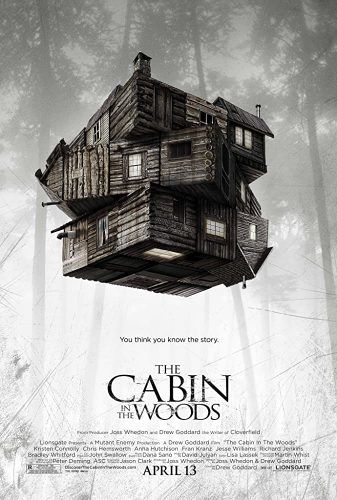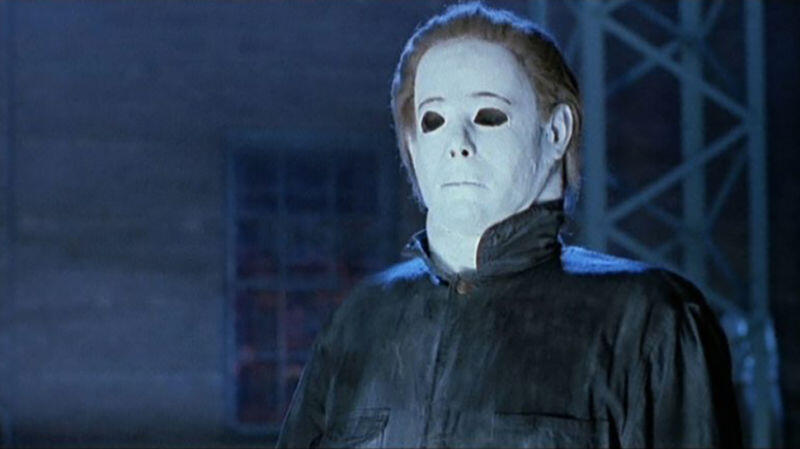Slashers are some of the most prominent films in the horror genre, and tend to be some of the most fun, self-aware and unabashedly violent films around. You can credit vintage flicks such as Psycho or Peeping Tom for laying the groundwork for the slasher genre, and 1974’s Black Christmas for first bringing all the elements together into what is undeniably a “slasher movie”. However, horror’s most energetic and mischievous sub-genre has a rich history behind it, which extends much further than a few standout motion pictures.
The Checklist
To begin, slasher films are made up of a few mandatory components:
A killer, usually masked and often on a path of blind revenge for some past tragedy.
The Slasher’s Victims
A group of youngsters, usually hormone driven and stupid, to be stalked by the killer. These can range from a group of schoolmates, to campers and counselors in a woodland retreat, and sometimes even a street-worth of families if Michael Myers gets involved.
One of these youngsters, primarily a girl, who abstains from the sinful behaviour of the rest and ends up being the last alive, sometimes defeating the killer. Slashers have always had a reputation of misogyny, and the idea of frequent ‘final girls’ portrayed and strong female leads is the best argument against this. Friday 13th: part 2 (1981)’s Ginny Field and A Nightmare on Elm Street’s Nancy Thompson are two great examples of women who overcome insurmountable odds to bring the fight straight back to their respective monstrous antagonists.
These particular tropes have become almost ritualistic to slasher movies, and it would be hard to call any film a slasher without the inclusion of all of them.
The Setting

An isolated setting, such as a campsite or cabin in the woods.
Buckets of blood and shock-value violence. While not all slashers are b-movies, and vice versa, a gritty excess in blood and gore can commonly be found in both.
The Mood
A crude, sometimes low-brow sense of humour, particularly in the 80s when the genre began to parody itself and grow exponentially because of it.
The Villain

The powerful masked villain is the most recognizable trait of the slasher genre, and we have Germany in the late 50s and 60s to thank for that. Based on the works of British novelist Edgar Wallace, Germany’s Krimi films (short for “kriminalfilm,” or “crime film”) focus mainly on these elusive antagonists, considering them important enough to frequently use them as the film’s title. Face of the Frog (1959) and Creature with the Blue Hand (1967) are prime examples of these. The stock cast archetypes found in slashers were also present in these pictures, in their more primitive forms. They usually include female protagonists, a group of victims to be systematically picked off, an officer on the case who is central to the plot and even a comic relief character. With all of these features, and of course the inclusion of some shock violence to spice up the proceedings, krimi films were some of the earliest artistic works laying the foundations for the slasher genre.
One type of early slasher that was directly influenced by krimi pics were Italian giallo films. Giallos often focus on a murder investigation featuring a masked killer, but they dial up the gore and sexuality to obscene degrees, carving themselves a distinct niche in the horror genre.
The Roots of Slasher Films

For all of its features, Mario Bava’s foundation-laying masterpiece Blood and Black Lace (1964) is as close to the first true slasher as an analysis could find. A mysterious killer in a huge black coat and hat stalks a group of female models while wearing a stocking over their face, creating an unsettling, featureless figure. This immediately iconic image burned an imprint into the giallo genre and its contemporaries.
The 1960s had only just begun when the UK was given two of the most legendary and influential releases in slasher history. For starters, Michael Powell’s controversial Peeping Tom shocked and confused audiences with its lurid sexual content and bizarre plot involving a serial killer documentarian who dispatches women using a knife stuck to his tripod, and films the results. While some see the thoughtfulness and understanding of human impulse and nature in Powell’s flick, others merely write it off as ridiculous proto-slasher voyeurism. Whatever your opinion, this is a chilling look into the psychology of a serial killer, with textured character exploration, heaps of satirical wit and a sense of colour use that still dazzles to this day.
Then came the big one. Psycho’s impact on audiences had Alfred Hitchcock’s storytelling and filmmaking mastery to thank, along with fantastic performances from Anthony Perkins
(Norman Bates) and Janet Leigh (Marion Crane). Perkins is especially unsettling as early-slasher Bates, delivering a performance that has been replicated (or attempted to be) to this day. Psycho is as effective today as it was in 1960, with its infamous shower scene accompanied by dissonant stabbing piano keys being one of the most recognisable images in horror today. Just try and say the word psycho in a crowd of horror fans without someone going “ree! ree! ree!” and stabbing the air.
“The calls are coming from inside the house!” We’ve all heard it before. Hopefully not in real life, though the number of scary stories and urban legends that climax with this unnerving statement are beyond counting. Black Christmas (1974), which was insipidly remade in 2006, boasts a status of being the first on-screen usage of the term. Not only this, it is the proud owner of a number of conventions which have been repeated in slashers to this day. Predating John Carpenter’s legendary Halloween (1978) by four years, it used many elements that Carpenter later employed, such as frequent POV shots from the killer’s perspective. Black Christmas was also integral in solidifying the misunderstood ‘final girl’ trope that has been worshipped by slashers to this day, with Jessica Bradford (Olivia Hussey) as one of the most resourceful and well-realised of them all.

John Carpenter’s Halloween is often considered to be the first “true” slasher in terms of tying all of the components of the slasher checklist together. Black Christmas director Bob Clark was actually telling Carpenter his idea of a sequel when he gave him the idea, inadvertently or not, for a slasher all of his own, one that would secure itself in the annals of horror legend. Clark’s idea was simply this: A psychopath would escape from an asylum around the Halloween holiday and begin terrorising the surrounding area. From this Michael Myers was born, otherwise known as ‘The Shape’, one of the more terrifying and restless of killers. One who kills (mostly) without prejudice, and with great aplomb. Halloween is of course a descendant of Black Christmas, though Carpenter’s flick stands on its own merits, and could be argued as being by far the more well-known of the two (even though a slew of sequels could be to blame for that). Carpenter plays on a very real fear in modern society, one of being attacked in your own home. Without clear motivation for any of his kills, excluding the fact that Michael and Laurie Strode (portrayed by Jamie Lee Curtis, the daughter of Psycho star Janet Leigh) were later made siblings, Michael seems to kill at complete random, which is one of the most universally terrifying concepts when properly considered.

It’s sometimes hard to believe The Texas Chainsaw Massacre (1974) even made it to the world of mainstream cinematic horror, as it remains to this day one of the more shockingly brutal, nihilistic and frequently hard-watching of slasher films. Tobe Hooper came along and redefined fright films forever with this monster. Based on the exploits of real-life serial killer and body-part handyman Ed Gein, Texas Chainsaw pushed the idea of a masked killer with a devastating signature weapon to new heights, creating one of the most infamous and universally terrifying killers in fiction, Leatherface. While the sequels made a blundering, almost lovable idiot of the man, the original shows him in all his ignorantly brutal glory. I won’t spoil anything for those who haven’t subjected themselves to Hooper’s masochistic classic, though the chainsaw wielding giant’s first appearance still sends chills down my spine. While Texas Chainsaw was one of the first to use the ‘Final Girl’ trope to such obvious effect, it will always be the relentless ferocity of the brain-damaged hulk Leatherface that defines the timeless greatness of The Texas Chainsaw Massacre.
While many directors still try to capture the classic slasher feel in their own unique way, many have taken the genre to more comedic and self-referential territory. Wes Craven’s worldwide hit Scream (1996) acted as a meta analysis of all slashers, constantly referencing the classics while being original enough in itself to secure a place alongside them. The Wayans brothers took things a step further with Scary Movie (2000) where they played meta on meta and turned Scream and many other horror movies into a flat out ridiculous comedy. Both of these franchises have dropped dramatically in quality over many, many sequels though the potency of both originals cannot be ignored. Some manage to work laughs in between the blood in different ways, one prime example being Tucker and Dale vs Evil (2010) where two lovable hillbilly brothers are mistaken for killers when a group of camping teens begin dying around them in ridiculous accidents. Happy Death Day (2017) and its direct sequel combine slashers with the consistently growing “groundhog day” subgenre to hilarious effect, while The Cabin in the Woods (2011) tries to create lore to explain literally every other horror movie in existence. As people’s love for slashers grow and expand, so do the ideas contributing towards the genre, though even the rawest, crudest and most ludicrous of these movies will alway hold a place in the hearts of the morbid.
Joe first knew he wanted to write in year six after plaguing his teacher’s dreams with a harrowing story of World War prisoners and an insidious ‘book of the dead’. Clearly infatuated with horror, and wearing his influences on his sleeve, he dabbled in some smaller pieces before starting work on his condensed sci-fi epic, System Reset in 2013.Once this was published he began work on many smaller horror stories and poems in bid to harness and connect with his own fears and passions and build on his craft.
Joe is obsessed with atmosphere and aesthetic, big concepts and even bigger senses of scale, feeding on cosmic horror of the deep sea and vastness of space and the emotions these can invoke. His main fixes within the dark arts include horror films, extreme metal music and the bleakest of poetry and science fiction literature.
He holds a deep respect for plot, creative flow and the context of art, and hopes to forge deeper connections between them around filmmakers dabbling in the dark and macabre.
